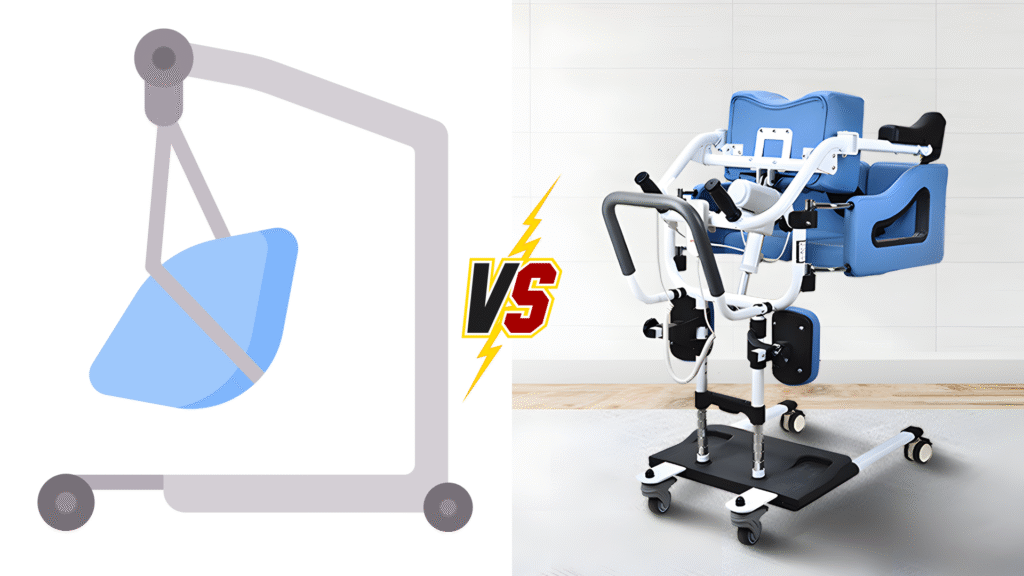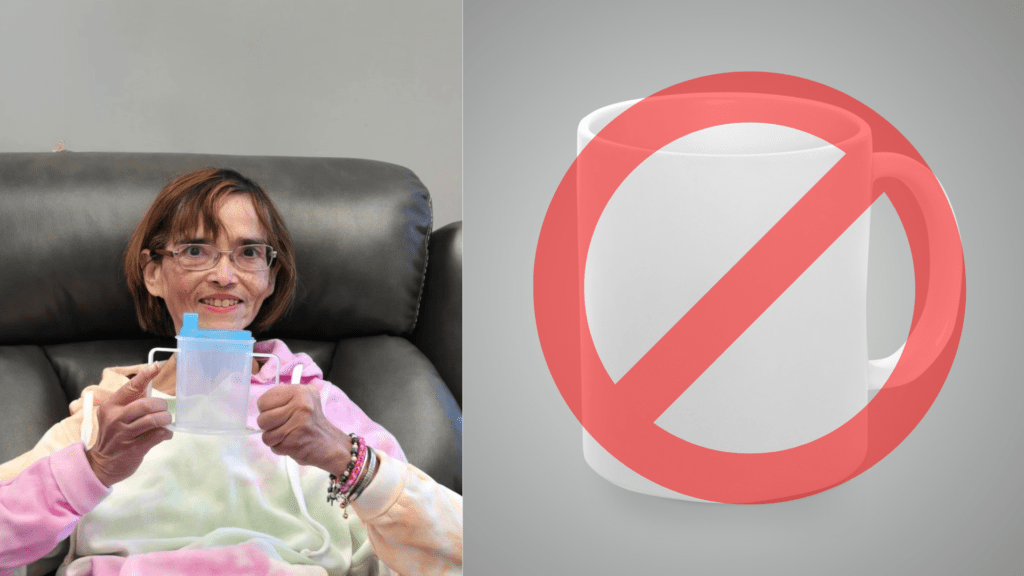Introduction: Why Patient Lifters Are Essential for Safe Transfers
Patient lifters are essential pieces of assistive lifting equipment that make moving individuals safer and more comfortable in hospitals, aged care facilities, and home settings. They are designed to reduce the risk of injury for both carers and patients during transfers, whether from bed to chair, bathroom to bedroom, or other daily movements.
For carers, a patient lifter reduces physical strain and lowers the chance of back injuries. For patients, it supports dignity, safety, and independence by ensuring they are lifted securely and comfortably.
Different Types of Patient Lifters
When choosing a lifter, it’s important to understand the different types available:
Sling Lifters and Hoist Lifters
These lifters use a supportive sling and are ideal for full-body transfers. They are versatile, making them suitable for a wide range of users including those with limited mobility.
Powered Patient Lifter with Armrest Seat
A modern option such as the Powered Patient Lifter with Armrest Seat allows easier transfers with powered operation, providing comfort for patients and less strain for carers.
Sit-to-Stand Patient Lifters
These lifters are designed for individuals who have some weight-bearing ability. They assist users to move from sitting to standing safely.
Bariatric Patient Lifters
For patients with higher weight requirements, bariatric lifters provide extra stability and strength, ensuring safety during transfers.
Portable Patient Lifters for Home and Aged Care
Portable options are lightweight, foldable, and easy to store—ideal for home use or smaller care settings.
Key Features to Look For
When selecting the right patient lifter, consider the following features:
Safe Weight Capacity and Stability: Always check the maximum weight capacity to ensure safety.
Compatibility with Slings: Choose a lifter that works with a variety of slings for different transfer needs.
Manual vs Powered Operation: Powered models reduce carer effort, while manual lifters can be more cost-effective.
Armrests, Seats, and Comfort Features: Added comfort improves the patient’s experience during transfers.
Portability and Storage: Foldable or lightweight lifters are easier to move and store.
Safety Considerations for Patient Transfers
Safety is the top priority when using a patient lifter.
Carer Safety and Ergonomic Handling: Ensure carers use proper techniques to prevent strain.
Proper Sling Fitting and Secure Locking Mechanisms: A well-fitted sling and reliable locks prevent accidents.
Occupational Therapist Recommendations: Always consult an OT for personalised advice on the right lifter.
Training and Safe Use in Home or Aged Care Settings: Proper training ensures both patients and carers remain safe.
NDIS and SWEP Funding Support
Funding support is available for patient lifters:
NDIS Approved Patient Lifters: NDIS participants may be eligible for funding when recommended by an OT.
SWEP Funding in Victoria: The State-Wide Equipment Program (SWEP) assists eligible Victorian residents in accessing essential lifting equipment.
How to Apply: An occupational therapist assessment is usually required before submitting funding applications.
For tailored advice, Contact Us for support with NDIS or SWEP funding.
Buying vs Hiring a Patient Lifter
Choosing whether to buy or hire depends on your situation:
Buying: Best for long-term use or permanent care needs.
Hiring: Suitable for short-term recovery or trial use before committing to a purchase.
Enquire Now about hire or purchase options.
Maintenance and Longevity Tips
To keep a patient lifter safe and reliable:
Regular Checks on Hoists and Slings: Inspect for wear, fraying, or damage.
Cleaning and Safe Storage: Follow manufacturer guidelines for cleaning and store in a dry, safe location.
Signs It’s Time to Replace Your Lifter: Reduced stability, unusual sounds, or visible damage signal the need for replacement.
Conclusion: Finding the Right Patient Lifter for Safety and Comfort
Selecting the right patient lifter ensures safety, comfort, and independence for patients while protecting carers from injury. By considering the type of lifter, essential features, and safety guidelines, carers and families can make informed decisions. With NDIS and SWEP support available, obtaining the right equipment is more accessible.
Shop More Mobility Equipment and View Patient Lifters today.
FAQs
What is the difference between a sling lifter and a sit-to-stand lifter?
A sling lifter supports full-body transfers, while a sit-to-stand lifter is designed for users with some weight-bearing ability who need assistance moving to a standing position.
Are patient lifters covered by NDIS?
Yes, patient lifters are often covered by NDIS funding if recommended by an occupational therapist as part of a participant’s care plan.
How do I know which weight capacity to choose?
Always consider the user’s weight and select a lifter with capacity well above it to ensure safety and stability. Bariatric lifters are recommended for higher weight support.
Can I hire a patient lifter instead of buying one?
Yes, many carers and families hire lifters for short-term recovery or while trialling equipment before purchase.
How often should a patient lifter be serviced?
Patient lifters should be inspected regularly and serviced according to the manufacturer’s recommendations—usually every 6–12 months.



